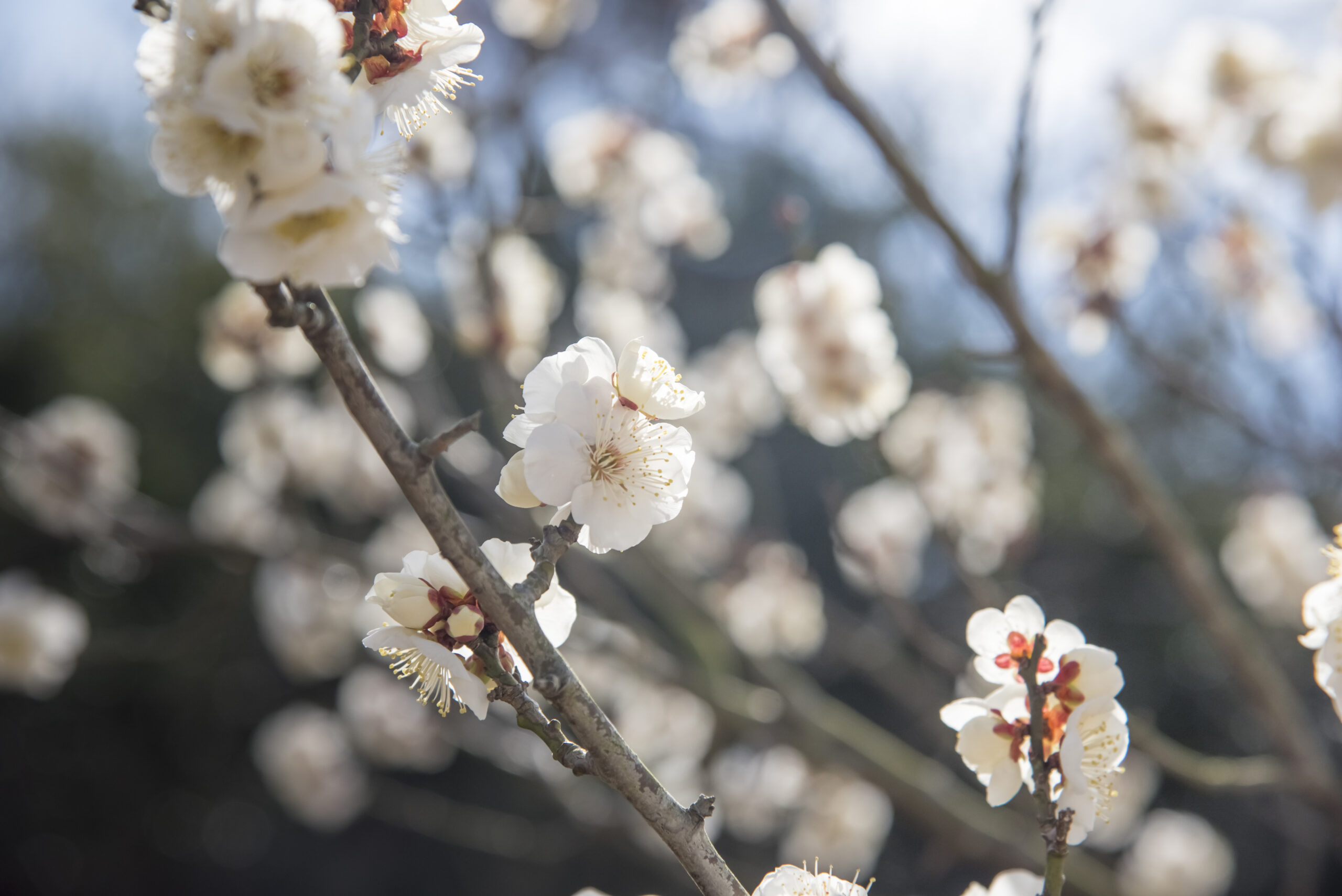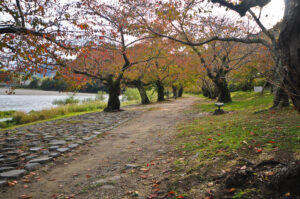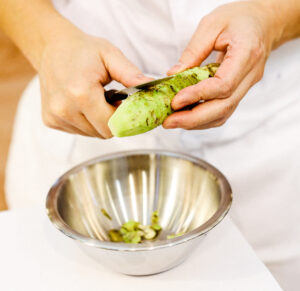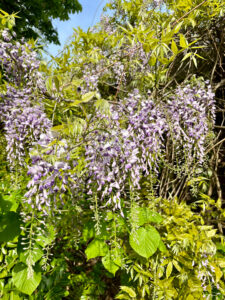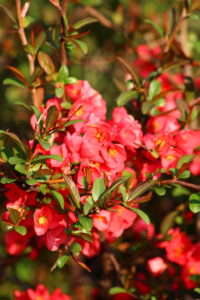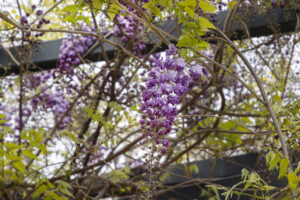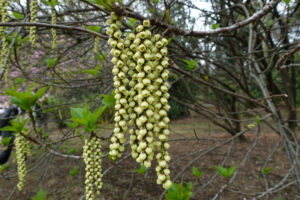Japan’s cherry plum trees (Prunus mume) hold a special place in the country’s cultural landscape, symbolizing resilience, beauty, and the passing of seasons. With their delicate pink and white blossoms heralding the arrival of spring, these trees carry deep historical roots and are intertwined with Japanese identity. As we explore their cultural significance, we delve into their historical background, symbolism, aesthetic value, and much more, illustrating why cherry plum trees are cherished throughout the nation.
Understanding the Cultural Importance of Cherry Plum Trees
The cultural importance of cherry plum trees in Japan is multifaceted, encompassing aesthetic, historical, and symbolic dimensions. Unlike the more globally recognized cherry blossoms, which bloom later in the spring, cherry plums blossom early, often when winter’s grip is still felt across the landscape. This early bloom is seen as a sign of hope and renewal, resonating with the Japanese spirit.
In traditional Japanese culture, the cherry plum tree has been celebrated as a representation of perseverance and resilience. Its ability to bloom in harsh conditions is a metaphor for overcoming adversity, which has made it a significant symbol in Japanese literature and folklore. The tree’s beauty is not just appreciated visually; it is also emblematic of the human experience, reflecting the cyclical nature of life.
The cherry plum tree is also associated with various cultural practices, including tea ceremonies and traditional art forms. Its blossoms are often utilized in the creation of seasonal decorations, signifying the transition from winter to spring. This cultural significance extends beyond mere aesthetics, as the tree plays an integral role in rituals that honor the changing seasons and the beauty of nature.
Moreover, the cherry plum has begun to foster a renewed appreciation among younger generations, who are increasingly recognizing their cultural heritage. This connection to historical traditions inspires a sense of belonging and identity, grounding individuals within their cultural context amid a rapidly modernizing society.
As Japan continues to navigate modernization, the cherry plum tree serves as a reminder of the importance of preserving cultural heritage. Its significance is not static; it evolves as new interpretations and meanings are derived from this beautiful tree, ensuring that it remains a vital part of Japanese culture.
In summary, the cherry plum tree is more than just a natural wonder; it embodies the spirit of resilience, beauty, and cultural identity in Japan. Its early blooms signal hope and renewal, making it an essential element of seasonal celebrations and reflecting the deep-rooted connection between nature and the Japanese people.
Historical Roots: Cherry Plums in Japanese Tradition
The cherry plum tree has a long-standing historical presence in Japan, tracing back over a thousand years. Initially brought to Japan from China, the tree has since adapted to the unique climate and soil conditions of the archipelago. Historical records indicate that the cherry plum was cultivated as early as the Nara period (710-794 AD), signifying its value to early Japanese society.
During the Heian period (794-1185), the cherry plum blossomed in both material and poetic culture. The blossoms became a favored subject in classical Japanese poetry, celebrated for their ephemeral beauty. Poets and artists alike were inspired by the delicate flowers, which often served as metaphors for the fleeting nature of life—a concept deeply rooted in Japanese aesthetics.
The cherry plum tree also played a role in traditional Japanese medicine. The plums were recognized for their health benefits, believed to help with digestion and detoxification. This medicinal value further solidified the tree’s importance in Japanese society, making it a staple in gardens and homes across the nation.
As time progressed, the cherry plum tree became associated with various cultural rituals. It was common for families to plant these trees near their homes, believing that they would bring prosperity and ward off evil spirits. This belief reflects an integrative approach to nature that characterizes traditional Japanese culture—a harmonious coexistence with the environment.
In the Edo period (1603-1868), the popularity of cherry plum trees surged, leading to the cultivation of different varieties. This period marked the beginning of a deeper appreciation for the cherry plum’s aesthetic qualities, with gardens designed specifically to showcase their beauty. The trees became common features in Japanese literature, art, and everyday life.
Today, the historical significance of cherry plum trees endures as a testament to their resilience and adaptability. As Japan celebrates its cultural heritage, the cherry plum tree remains a central figure in the narrative of the nation, symbolizing an enduring connection to its past.
The Symbolism of Plum Blossoms in Japanese Culture
In Japanese culture, the symbolism of plum blossoms transcends mere aesthetics. The blossoms, known as "ume," are often associated with perseverance, purity, and renewal. Their ability to bloom in the harshest of conditions makes them emblematic of strength and resilience, qualities that resonate deeply in the Japanese consciousness.
The plum blossom is also a symbol of the arrival of spring, a time of renewal and rebirth. As one of the first flowers to bloom in the new year, the ume signifies the warming of the earth and the promise of new beginnings. This association with seasonal change is significant in traditional Japanese festivals and celebrations, particularly the Plum Blossom Festival, where people gather to admire the blossoms.
In Buddhism, the plum blossom’s fleeting beauty is often likened to the impermanence of life—a fundamental tenet of Buddhist philosophy. This connection enhances the blossoms’ cultural significance, as they serve as a poignant reminder of the transient nature of existence. In art and literature, this theme is frequently explored, as writers and artists capture the blossoms’ beauty in the context of life’s impermanence.
Furthermore, cherry plum blossoms are often linked to female beauty and virtue in Japanese tradition. The flowers’ delicate nature and ephemeral existence serve as metaphors for the fleeting beauty of youth and the qualities of grace and elegance associated with women. This symbolism is evident in various artistic expressions, from paintings to traditional poetry.
In contemporary Japan, the symbolism of the cherry plum blossoms continues to inspire movements for social change and environmental awareness. As society confronts modern challenges, the plum’s symbolism of resilience and hope encourages individuals to persist in the face of adversity.
Overall, the rich symbolism of cherry plum blossoms in Japanese culture reflects a deep appreciation for nature and its ability to mirror the human experience. This connection between flora and humanity underscores the importance of preserving these trees for future generations.
Cherry Plum Trees: A Harbinger of Spring’s Arrival
Cherry plum trees are revered as harbingers of spring in Japan, often blooming as early as late February to March, when winter still lingers. Their early blossoms signal a transition in the seasons, serving as a reminder that the cold months will soon give way to warmth and renewal. The sight of cherry plum trees in full bloom brings joy and anticipation, marking the end of winter and the beginning of a vibrant season.
The blooming of cherry plum trees is celebrated across the nation, with many communities hosting festivals and events to honor this seasonal marker. These gatherings allow people to come together to appreciate the beauty of the blossoms, participate in traditional activities, and enjoy seasonal foods, reinforcing the communal spirit that pervades Japanese culture.
The significance of cherry plum trees as symbols of spring is deeply embedded in Japanese poetry and literature. Classical poets have penned verses capturing the beauty and ephemeral nature of the blossoms, often reflecting on themes of renewal and the passage of time. These literary works contribute to the cultural memory surrounding the cherry plum, reinforcing its status as a beloved symbol of spring.
Moreover, the cherry plum’s early bloom creates a sense of anticipation for the cherry blossoms that follow. The relationship between the two trees is significant in Japanese culture, as both symbolize the beauty of transient moments. This sequential blooming creates a rhythm of nature that resonates with the Japanese appreciation for the changing seasons.
As urbanization increases and natural landscapes evolve, the cherry plum tree’s blooming continues to inspire efforts for environmental conservation. The sight of these trees in full bloom serves as a reminder of nature’s resilience, encouraging communities to protect and preserve their green spaces amidst growing concrete jungles.
In summation, cherry plum trees’ role as harbingers of spring is integral to Japan’s seasonal celebrations. Their early blooms not only mark the arrival of warmer weather but also evoke feelings of hope, renewal, and a deep connection to nature that permeates Japanese culture.
The Aesthetic Appeal of Cherry Plum Blossoms
The aesthetic appeal of cherry plum blossoms is undeniable, captivating anyone who encounters their delicate beauty. The flowers typically range in hue from soft pink to pristine white, creating vibrant visual displays against the stark backdrop of winter’s remnants. This enchanting array of colors embodies the beauty of the changing seasons, drawing people into gardens and parks where these trees flourish.
In traditional Japanese aesthetics, the cherry plum blossom represents "mono no aware" or the beauty of fleeting moments. This philosophy encourages a deep appreciation for the transient beauty of nature, reminding people to embrace each season’s unique offerings. The cherry plum’s ephemeral blossoms are celebrated for their ability to evoke emotions and inspire reflection.
Japanese gardens often incorporate cherry plum trees to enhance their aesthetic appeal. The trees are strategically placed to create harmonious compositions, allowing visitors to experience the beauty of the blossoms from multiple perspectives. Cherry plums serve as focal points in garden designs, leading the eye through carefully curated landscapes that captivate and inspire contemplation.
Photographers, artists, and writers frequently draw inspiration from cherry plum blossoms, capturing their beauty through various mediums. The blossoms appear in paintings, photography, and literature, serving as symbols of renewal and hope. The artistic representation of cherry plum trees plays a vital role in preserving their cultural significance while also showcasing their stunning beauty.
In contemporary Japanese society, the aesthetic appeal of cherry plum blossoms continues to influence fashion, design, and pop culture. From clothing collections inspired by the blossoms to decorations that incorporate their likeness, the cherry plum’s beauty is celebrated in various forms. This cultural resonance ensures that the tree’s aesthetic charm remains relevant and influential.
Ultimately, the aesthetic appeal of cherry plum blossoms captivates the hearts and minds of people across Japan. Their delicate beauty serves as a reminder of nature’s elegance, inspiring creativity, reflection, and appreciation for the fleeting moments that life offers.
Festivals Celebrating Cherry Plum Trees Across Japan
Cherry plum trees are celebrated across Japan through various festivals that honor their early blooms. These festivals, known as "ume matsuri," typically occur in late winter and early spring, coinciding with the peak blossom season. Each festival offers a unique experience, allowing visitors to immerse themselves in the beauty of the trees while also engaging in traditional activities.
One of the most notable ume matsuri is the Kairakuen Plum Blossom Festival held in Mito, Ibaraki Prefecture. Known for its vast collection of cherry plum trees, Kairakuen attracts thousands of visitors each year who come to admire the stunning display of blossoms. The festival features food stalls, cultural performances, and traditional tea ceremonies, providing a vibrant atmosphere that celebrates the arrival of spring.
In Tokyo, the Yushima Tenmangu Shrine hosts its own plum blossom festival, drawing attention for its historical and cultural significance. The shrine, dedicated to the deity of learning, features beautiful cherry plum trees that bloom in early spring. During the festival, visitors can enjoy traditional music performances, art exhibits, and food vendors, creating a festive atmosphere that honors both the blossoms and the shrine’s rich history.
Other local festivals celebrate cherry plum trees in smaller, yet equally meaningful ways. Community gatherings often feature plum blossom viewing parties, where families and friends come together to enjoy picnics beneath the trees. These gatherings foster a sense of community and connection, reinforcing the cultural importance of the cherry plum tree as a symbol of spring’s arrival.
The celebration of cherry plum trees also extends beyond festivals, as seasonal foods and drinks become popular during this time. Delicacies such as umeboshi (pickled plums) and umeshu (plum wine) are enjoyed, connecting culinary traditions with the blossoming season. This fusion of cultural elements enhances the overall experience of celebrating cherry plum trees.
In conclusion, the festivals honoring cherry plum trees are vital cultural events that mark the transition into spring. Through communal gatherings, traditional activities, and culinary delights, these celebrations cultivate a deep appreciation for the beauty of the cherry plum blossoms while reinforcing the bonds within communities.
Cherry Plum Trees in Art and Literature of Japan
Cherry plum trees have long been a source of inspiration for Japanese artists and writers, capturing the beauty and symbolism of their blossoms in various artistic expressions. The relationship between nature and humanity is a recurring theme in Japanese art, and the cherry plum tree stands as a powerful symbol of resilience and renewal in this narrative.
In traditional Japanese painting, cherry plum blossoms are often depicted alongside other seasonal flowers, creating harmonious compositions that celebrate nature’s beauty. Artists such as Ogata Korin and Katsushika Hokusai have immortalized the delicate blossoms in their works, showcasing their ephemeral beauty and capturing the essence of Japanese aesthetics.
Literature also plays a vital role in conveying the significance of cherry plum trees. Classical poets, including Matsuo Bashō and Yosa Buson, have written extensively about the blossoms, weaving themes of transience and the changing seasons into their verses. These literary works not only reflect the beauty of the flowers but also explore deeper philosophical themes connected to the human experience.
The cherry plum tree’s influence extends to modern literature as well, with contemporary authors drawing inspiration from its symbolism. The blossoms often serve as metaphors for hope, resilience, and the cyclical nature of life, resonating with readers and inviting reflection on the human condition. This continued relevance underscores the enduring connection between the cherry plum tree and Japanese cultural identity.
In addition to literature and painting, the cherry plum tree’s presence can be found in various forms of traditional art, including ceramics, textiles, and calligraphy. Craftsmen and artisans often incorporate cherry plum motifs into their creations, infusing everyday items with the beauty and meaning associated with the blossoms.
Ultimately, the cherry plum tree’s significance in art and literature reflects a deep appreciation for nature and its ability to inspire creativity. Through various artistic expressions, the tree continues to resonate with individuals, fostering a connection to cultural heritage and the timeless beauty of the natural world.
Culinary Uses: The Edible Side of Cherry Plums
Beyond their aesthetic appeal, cherry plums also hold culinary significance in Japan. The fruit of the cherry plum tree, known as "ume," has been valued for its unique flavor and numerous health benefits. Traditionally, ume has been utilized in various dishes, beverages, and even medicinal remedies, reflecting the deep-seated connection between food and culture in Japan.
One of the most popular uses of ume is in the preparation of umeboshi, a tangy pickled plum that has been a staple in Japanese cuisine for centuries. The process of making umeboshi involves brining the plums with salt and then drying them under the sun. These pickled plums are often served as a side dish, added to rice balls (onigiri), or enjoyed with tea, offering a burst of flavor that complements many traditional meals.
Umeshu, or plum wine, is another beloved culinary creation derived from cherry plums. The process of making umeshu involves steeping ume in alcohol, typically shochu or sake, along with sugar. The resulting beverage is sweet, aromatic, and often enjoyed as a refreshing drink, especially during the warmer months. Umeshu has gained popularity both domestically and internationally, showcasing the versatility of cherry plums in Japanese cuisine.
In addition to these well-known preparations, cherry plums are also used in a variety of desserts and confections. Ume-flavored sweets, such as jelly and sorbet, are popular treats that highlight the fruit’s unique taste. Culinary innovation and fusion have further expanded the use of ume in contemporary dishes, with chefs creatively incorporating it into salads, sauces, and marinades.
The nutritional benefits of cherry plums add to their culinary appeal. Rich in vitamins, antioxidants, and dietary fiber, ume is believed to aid digestion, boost the immune system, and promote overall health. This medicinal aspect has contributed to the enduring popularity of cherry plums in Japanese culture, as people embrace their health benefits alongside their culinary uses.
Overall, the culinary uses of cherry plums reflect the rich tapestry of Japanese culture, where food is deeply intertwined with tradition, health, and creativity. As the appreciation for ume continues to grow, it remains an integral part of Japan’s culinary landscape.
Conservation Efforts for Japan’s Cherry Plum Trees
As the significance of cherry plum trees continues to resonate throughout Japan, the need for conservation efforts becomes increasingly pressing. Urbanization, climate change, and the loss of traditional cultivation practices have posed challenges to these beloved trees, prompting initiatives aimed at ensuring their preservation for future generations.
Local governments and community organizations are at the forefront of conservation efforts, actively promoting the planting and maintenance of cherry plum trees. Initiatives often include educational programs that raise awareness of the cultural and environmental importance of these trees, encouraging community engagement and participation in conservation activities.
In recent years, numerous festivals have emerged that celebrate not just the beauty of cherry plum blossoms but also the importance of preserving these trees. These events often feature workshops on sustainable gardening practices, tree planting, and the sharing of knowledge about the historical significance of cherry plums in Japanese culture. By fostering a sense of community and connection, these festivals play a vital role in ensuring the future of cherry plum trees.
Research institutions and universities are also contributing to conservation efforts by studying the genetic diversity of cherry plum trees and exploring methods for their cultivation and propagation. By understanding the unique characteristics of different varieties, researchers aim to develop strategies for maintaining genetic diversity, which is crucial for the resilience of these trees in the face of environmental changes.
The involvement of local farmers and gardeners is another essential aspect of conservation. Many individuals have taken it upon themselves to cultivate cherry plum trees, often sharing their harvests with community members. This grassroots approach not only helps sustain local ecosystems but also reinforces the cultural significance of cherry plum trees within communities.
In conclusion, conservation efforts for cherry plum trees are vital in preserving their cultural and ecological significance in Japan. Through community engagement, research, and sustainable practices, these initiatives aim to ensure that future generations can continue to appreciate the beauty and resilience of cherry plum trees as symbols of hope and renewal.
Influence of Cherry Plum Trees on Japanese Gardens
Cherry plum trees have had a significant influence on the design and aesthetics of Japanese gardens, where their early blooms serve as a pivotal element in creating seasonal beauty. The incorporation of cherry plum trees into garden landscapes reflects a deep appreciation for nature and the transient beauty of life, both of which are central to Japanese gardening philosophy.
In traditional Japanese gardens, cherry plum trees are often positioned to enhance the visual experience of the space. Strategically placed alongside water features or in harmony with other seasonal blooms, these trees create striking focal points that draw the eye and invite contemplation. The juxtaposition of the delicate blossoms against the natural landscape encourages a sense of tranquility and connection to nature.
The early blooming of cherry plum trees also serves as a bridge between winter and spring, allowing gardeners to celebrate the changing seasons. As the first trees to blossom, they herald the arrival of warmer weather, inspiring gardeners to create seasonal displays that evolve throughout the year. This cyclical approach to gardening highlights the importance of nature’s rhythm in Japanese culture.
Moreover, the aesthetics of cherry plum trees have influenced various design elements within Japanese gardens. The graceful branches and delicate blossoms often inspire the creation of pathways, seating areas, and viewing platforms that encourage visitors to immerse themselves in the beauty of the garden. These carefully curated spaces invite reflection and appreciation of the natural world.
The significance of cherry plum trees extends to cultural practices within gardens, including tea ceremonies and seasonal celebrations. Japanese tea gardens often feature cherry plum trees as part of the landscape, where guests can admire the blossoms while enjoying the tranquility of the surroundings. This integration of nature and cultural rituals highlights the importance of cherry plum trees in shaping the experience of Japanese gardens.
In summary, cherry plum trees have played a vital role in the design and aesthetics of Japanese gardens. Their early blooms not only enhance the visual appeal of these spaces but also embody the cultural significance of nature’s beauty, inspiring a deep appreciation
